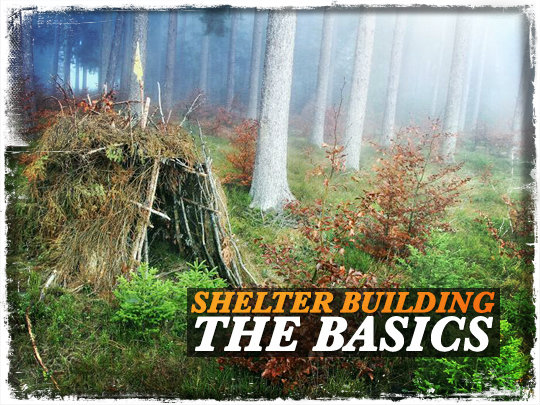
A previous article talked about the importance of shelter placement, so we will not discuss shelter locations in great detail other than to say it may be one of the more important aspects when it comes to your safety. Today’s article will discuss other aspects of shelters such as size, and materials and why you need one regardless of temperature and weather.
Size
In cold weather you want it just big enough for your body, and whatever gear you have. The smaller the shelter the easier it is to heat and to retain your body heat. You also do not want to expend a lot of energy and materials building your shelter.
Materials
If you start out unprepared to shelter overnight or even shelter for a few hours then you will have to construct a debris hut or find a natural shelter. Something as simple as breaking a frigid wind or blocking the hot rays of the sun can save your life.
In cold weather however, you will need to insulate your body from the cold ground, so you will need materials such as leaves, pine boughs, pine needles, and dried grasses for ground insulation. A simple waterproof ground cloth would not provide enough ground insulation in cold weather.
Mylar blankets can be used for emergency shelters if you have cordage and other means of securing the material, otherwise a slight breeze can carry the blanket away. Use the blankets along with forest debris. Once you have a debris hut built line the inside with a Mylar blanket to reflect heat in cold weather and use on the outside in the summer to reflect the hot rays of the sun away from the shelter.
Once you have the poles in place any forest debris can be used to help repel rain and snow and to block cold winds and even the sun. Your shelter can be as simple as placing some stout saplings against a fallen log or you can build a tepee style shelter by creating a tripod and filling in the sides with saplings and forest debris.
You can scoop out the soil under a fallen log to create a body sized depression. Pile some debris on one side to create an ad hoc lean to shelter. Build your fire so it reflects into the depression, but of course be careful not to set fire to your new home.
Soil and snow make great insulators for the sides of your hut, but it will require some work to make your hut as warm as possible. It is important to set out on your day hike or other outdoor adventure prepared to shelter overnight. Tarps and Mylar blankets and even the heavier Mylar blankets are lightweight and can be carried in any pack or even folded/rolled and lashed to your body.
For those that think they do not need a shelter at night in the woods in the summer months probably should never get caught in the woods after dark. Once the sun goes down you can get ground fog which can soak your clothing and settle on your skin, and then once the temperature drops you may very well feel cold. Hypothermia can develop at temperatures around 50° F. Cool air combined with high humidity/moisture could spell problems.
You cannot simply drop to the ground and go to sleep. You need some protection from insects, four legged predators, and even reptiles to some extent. Shelter is important and it must be planned for, and be adequate any time you spend a night in the woods.
Pack for the seasons. In the winter a tarp/poncho may not be sufficient for overnight. They are ideal for blocking cold winds for a few hours, or providing shade in the hot sun, but for overnight in extreme cold you may have to use a tarp or poncho along with forest debris to make a warm shelter. Know the terrain and weather patterns before you set out so you can pack your kit accordingly.